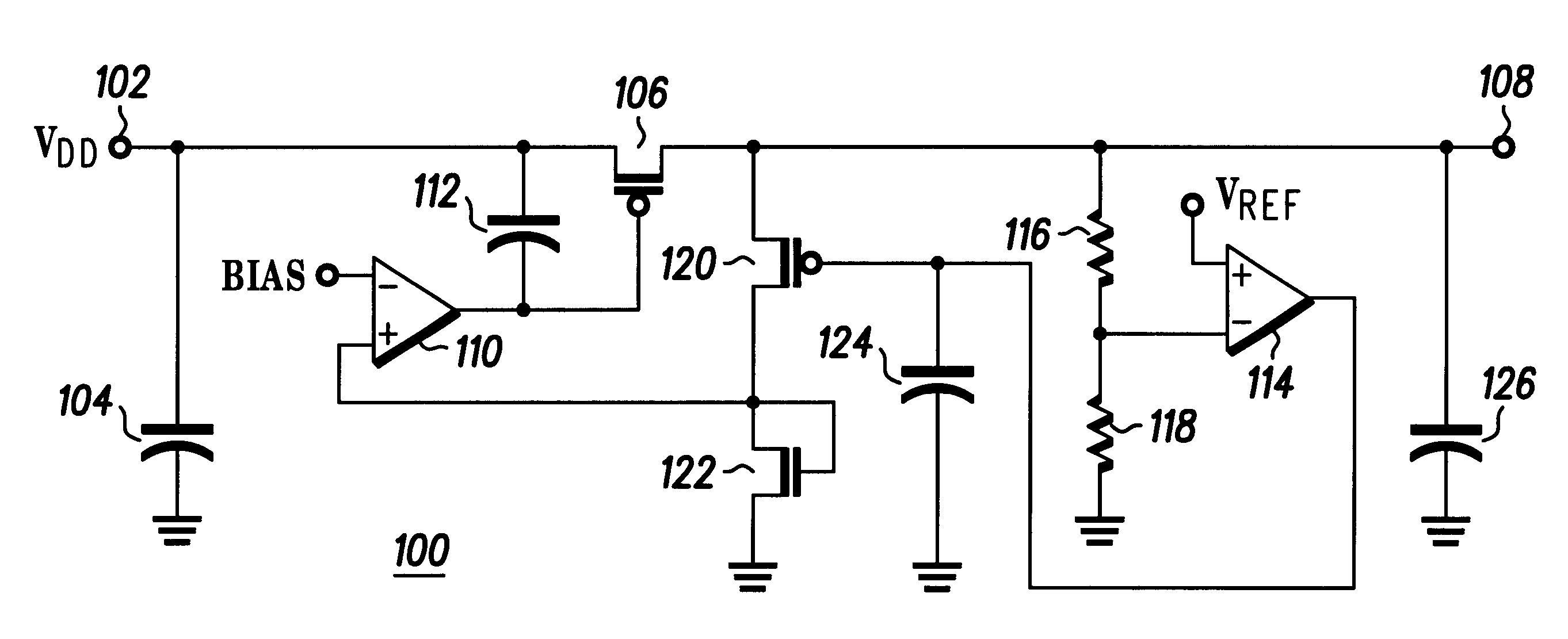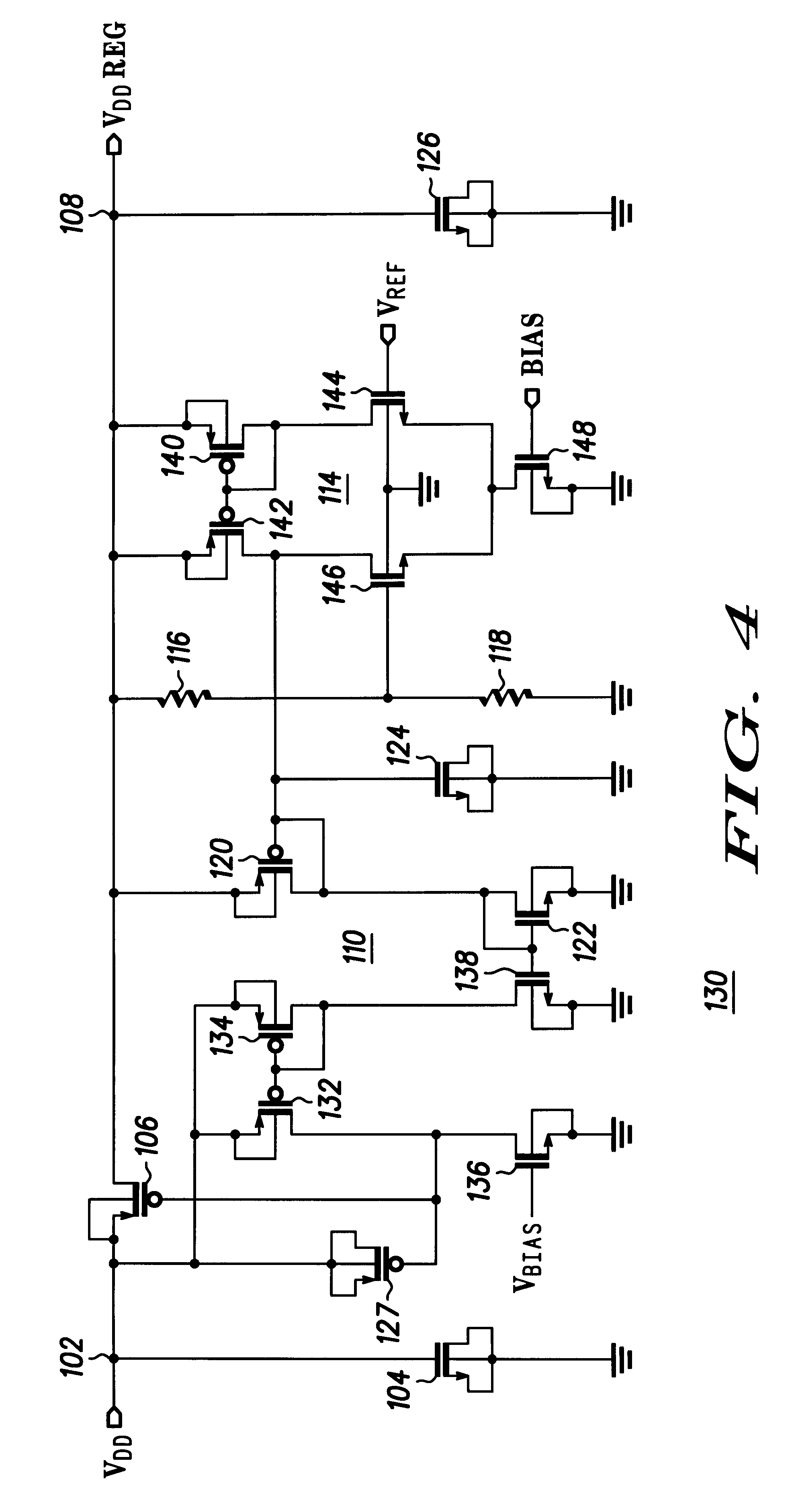Low power voltage regulator with improved on-chip noise isolation
- Summary
- Abstract
- Description
- Claims
- Application Information
AI Technical Summary
Problems solved by technology
Method used
Image
Examples
Embodiment Construction
The present invention is a voltage regulator, which may be termed a shunt regulator, for isolating radio frequency circuits from on-chip digital circuit originated noise and the integrated circuit chip. Unlike prior art shunt regulators, which constantly supply full current, shunting any current not used by the load; the voltage regulator of the present invention constantly shunts a minimum current, e.g., 1 mA, and supplies whatever current needed for the load in excess of that minimum, responsive to variations in the shunt current. The voltage regulator includes regulator device (a PFET) driven by a sense amplifier to derive a regulator voltage from a supply voltage. Another sense amplifier senses changes in output voltage resulting from load current changes and adjusts current through a current shunt so that the current shunt shunts excess load current. The sense amplifier driving the regulator device senses current flow through the current shunt and adjusts the current supplied b...
PUM
 Login to view more
Login to view more Abstract
Description
Claims
Application Information
 Login to view more
Login to view more - R&D Engineer
- R&D Manager
- IP Professional
- Industry Leading Data Capabilities
- Powerful AI technology
- Patent DNA Extraction
Browse by: Latest US Patents, China's latest patents, Technical Efficacy Thesaurus, Application Domain, Technology Topic.
© 2024 PatSnap. All rights reserved.Legal|Privacy policy|Modern Slavery Act Transparency Statement|Sitemap



